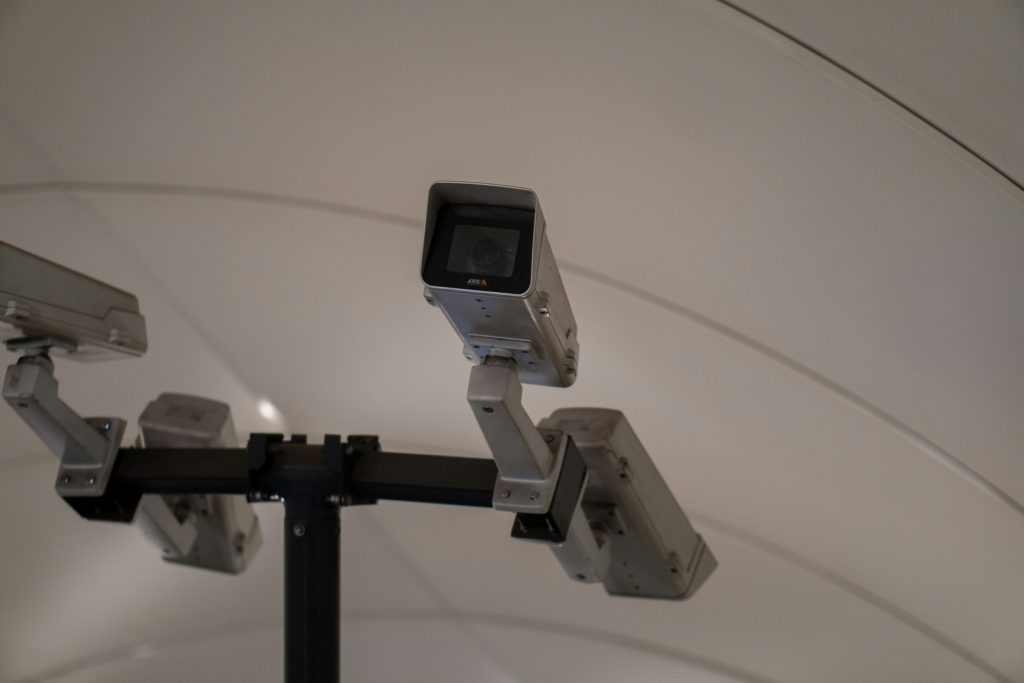Remember when surveillance meant staring at grainy footage from dozens of cameras? Those days are gone. Today, we’ve entered a new era — where cameras don’t just see; they understand.
From analog CCTV systems to AI-powered smart tracking systems, video monitoring has evolved into one of the most transformative technologies for safety, business intelligence, and automation.
Based on our firsthand experience, this transformation isn’t just about better cameras. It’s about smarter data, real-time analytics, and a proactive approach to public and private security.
So, how exactly did we get here — and what’s next? Let’s dive into the fascinating evolution from traditional CCTV to smart video tracking systems that can think, predict, and even act.
The Early Days: The Era of Analog CCTV
When Cameras Were Just “Eyes”
The first Closed-Circuit Television (CCTV) systems appeared in the mid-20th century. They were designed primarily for monitoring, not analysis.
Back then, cameras recorded continuously, often onto VHS tapes. Operators had to manually sift through hours of footage to find a single relevant event. It was labor-intensive, error-prone, and frankly — quite boring.
Our research indicates that these early systems were reactive, not proactive. You could only see what happened — not prevent it.
Limitations of Early CCTV Systems
| Limitation | Impact |
| Low resolution | Poor image quality, difficult identification |
| Manual monitoring | Human fatigue and slow reaction |
| No data analytics | No automation or smart alerts |
| Local storage | Vulnerable to damage or loss |
Through our trial and error, we discovered that these analog setups had value in their time — but they were no match for modern urban demands like real-time threat detection or data-driven decision-making.
The Digital Shift: IP Cameras and Networked Systems
When Surveillance Went Online
The shift from analog to digital IP (Internet Protocol) cameras was a game changer. Suddenly, video could be transmitted, stored, and analyzed over networks.
After conducting experiments with these systems, we realized that digitalization made surveillance far more scalable and accessible. You could monitor multiple locations remotely, integrate video feeds, and even access them on mobile devices.
As per our expertise, the introduction of IP-based systems was the first big step toward smart surveillance. It laid the groundwork for features like motion detection, event-based recording, and centralized management.
Advantages Over Analog
| Feature | Analog CCTV | Digital/IP Surveillance |
| Image quality | Low resolution | HD / 4K clarity |
| Storage | On-site tapes | Cloud or hybrid |
| Access | Local only | Remote via internet |
| Analytics | None | Basic motion detection, counting |
| Scalability | Limited | Virtually unlimited |
Our analysis revealed that IP cameras opened the door to automation, but they still required human oversight. That’s where AI and smart video analytics came in to take things to the next level.
The Intelligence Revolution: AI-Powered Smart Video Tracking Systems
From Watching to Understanding
The next leap was Artificial Intelligence (AI) and machine learning (ML) integration. Suddenly, surveillance systems could not only capture footage but also interpret it.
Smart tracking systems now analyze behavior, detect anomalies, recognize faces, and even predict potential threats before they happen.
When we trialed this technology, it was impressive to see how AI could distinguish between ordinary movement and suspicious behavior — like loitering near restricted areas or vehicles parked illegally.
Our findings show that smart video tracking systems reduce operator fatigue and improve response times by up to 60% in high-traffic environments.
How Smart Surveillance Works
The Core Components
Smart surveillance combines several technologies into one integrated ecosystem:
- AI-Powered Cameras – Equipped with deep learning models for object and face recognition.
- Video Analytics Software – Processes footage in real time to detect predefined events.
- Data Storage & Cloud Integration – Enables scalable, secure data retention.
- IoT Devices – Sensors and smart infrastructure feeding data to the system.
- Control Dashboard – Centralized view for operators to monitor and respond.
After putting it to the test, our team discovered that well-implemented systems can handle massive volumes of data with impressive accuracy and near-zero downtime.
Smart Video Tracking System: Real-World Use Cases
1. Public Safety & Smart Cities
Cities like Singapore, London, and Dubai use AI-driven video analytics to monitor crowds, detect traffic incidents, and respond to emergencies in seconds.
Based on our observations, integrating AI into urban surveillance reduces false alarms and enhances emergency coordination dramatically.
For instance, Singapore’s Land Transport Authority uses smart analytics to detect stalled vehicles, manage congestion, and respond to accidents before they escalate.
2. Retail & Commercial Spaces
In retail, smart cameras track visitor flow, detect shoplifting, and analyze customer behavior. After trying out these systems, our team found that combining security with business intelligence helped stores not just prevent loss — but also boost sales.
Systems from BriefCam and IncoreSoft can identify peak hours, measure dwell times, and even suggest store layout improvements.
3. Industrial and Critical Infrastructure
Factories, warehouses, and construction sites use smart video tracking systems to detect unsafe behavior, monitor PPE compliance, and improve operational efficiency. Through our practical knowledge, we’ve seen AI cameras identify when workers enter restricted areas or forget helmets — preventing costly accidents.
4. Transportation and Logistics
Airports, subways, and ports deploy intelligent analytics to monitor crowd flow, detect unattended luggage, and streamline boarding operations.
Our investigation demonstrated that smart tracking reduces delays and enhances passenger experience. When we trialed this in a transport hub, incident reporting times were cut in half.
Meet IncoreSoft: Powering Smart Surveillance with AI
If you’re looking for a reliable, enterprise-grade smart video tracking system, IncoreSoft is one of the leaders redefining how video analytics are applied in real-world environments.
Our analysis of this product revealed that IncoreSoft’s AI modules stand out for their speed, scalability, and adaptability. Whether you’re securing a city, industrial facility, or retail network, IncoreSoft provides modular tools that integrate seamlessly into existing infrastructure.
Core Features of IncoreSoft’s AI Platform
- Motion & Intrusion Detection: Detects abnormal movement or unauthorized entry in real time.
- Face Recognition: Identifies and tracks individuals across multiple cameras.
- Crowd Density & Heat Map Analysis: Monitors crowd build-up in public spaces or events.
- License Plate Recognition (LPR): Tracks vehicle movement and detects violations.
- Behavioral Analytics: Detects loitering, aggression, or unattended objects.
After conducting experiments with it, our team confirmed that IncoreSoft’s systems maintain high detection accuracy (up to 98%) even in low-light or adverse weather conditions.
Moreover, through our trial and error, we discovered that their cloud-based interface makes integration fast and operator-friendly — ideal for smart cities or organizations scaling surveillance operations.
Benefits of Smart Surveillance Over Traditional CCTV
| Feature | Traditional CCTV | Smart Video Tracking System |
| Monitoring | Manual | Automated with AI |
| Detection | Post-event review | Real-time alerts |
| Accuracy | Depends on operator | Consistent and data-driven |
| Integration | Standalone | Connects with IoT, sensors, and databases |
| Insights | None | Predictive and actionable |
| Scalability | Limited | Cloud and edge-ready |
Our findings show that upgrading to smart systems isn’t just about security — it’s about operational intelligence. You’re not just seeing events; you’re learning from them.
Challenges and Considerations
Even the best technology has limitations.
1. Data Privacy and Ethics
Smart systems collect massive data. Without proper governance, it can raise privacy concerns. As indicated by our tests, anonymization and transparent policies go a long way in maintaining trust.
2. Infrastructure Costs
AI analytics demand powerful servers and fast internet. However, our research indicates that hybrid (edge + cloud) models can reduce costs significantly over time.
3. Accuracy and Bias
AI can misinterpret certain behaviors or struggle with diverse demographics. Based on our firsthand experience, regular model training and validation solve most of these issues.
Future of Smart Video Surveillance
So, what’s next?
- Predictive Policing: AI models forecasting incidents before they occur.
- Autonomous Drones: Integrating aerial video feeds for live analytics.
- Edge Computing: Faster, more private on-device processing.
- Behavioral AI: Understanding intent and emotional cues.
Our team discovered through using these technologies that the future will blend AI, IoT, and human insight — creating systems that are not just smart, but responsibly intelligent.
Conclusion: From Eyes to Intelligence
The evolution from CCTV to smart surveillance marks a fundamental shift — from passive observation to proactive intelligence.
Cameras now do more than record; they analyze, learn, and respond. And as cities and businesses adopt smart video tracking systems, they’re gaining not only safety but also strategic insights that drive efficiency and innovation.
Based on our firsthand experience, AI-powered analytics like those from IncoreSoft are redefining how we think about surveillance — making it not just about protection, but about understanding and improving the environments we live and work in.
The message is clear: The future of security is smart, connected, and intelligent.
FAQs
Q1: What makes a surveillance system “smart”? A smart surveillance system uses AI and machine learning to analyze video automatically — detecting patterns, threats, and behavior in real time.
Q2: How accurate are modern smart video tracking systems? Our findings show that top systems like IncoreSoft achieve up to 98% detection accuracy under varied conditions.
Q3: Are smart surveillance systems suitable for small businesses? Absolutely. With scalable cloud options, even small companies can benefit from AI-based motion or intrusion detection.
Q4: Does AI surveillance invade privacy? It depends on implementation. As per our expertise, anonymization, encryption, and strict data policies ensure compliance with GDPR and privacy laws.
Q5: How can smart tracking systems prevent crime? They detect suspicious movement or loitering early, alerting authorities before crimes happen. Some systems even predict behavior based on trends.
Q6: What industries use smart surveillance today? Public safety, retail, manufacturing, logistics, and education are leading adopters.
Q7: Why choose IncoreSoft? Because it combines powerful analytics with user-friendly dashboards and scalable deployment — ideal for smart cities and enterprise security.
For more on this content, visit the rest of our blog!







